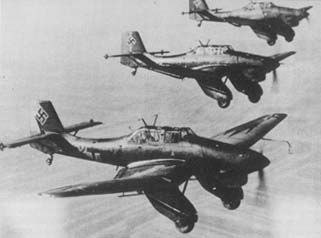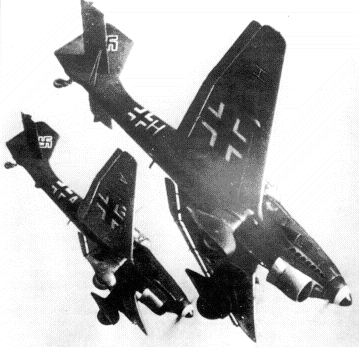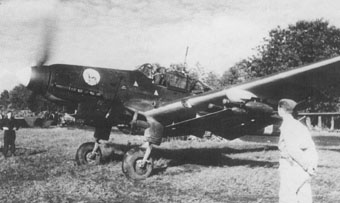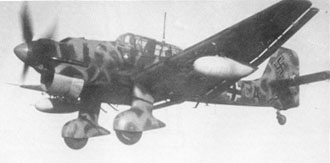Junkers Ju 87
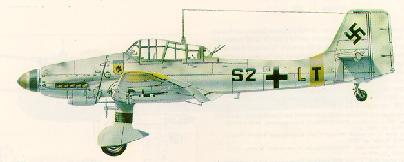
|
The Junkers Ju 87 served as a two-seat divebomber and close support
aircraft for Germany between 1937-45. This famous plane is better
known as "Stuka," abbreviation of Sturzkampfflugzeug
(dive attack aircraft). The U.S. Navy was the first to develop the
technique of dropping bombs by diving steeply toward the target and
aiming the whole aircraft like what a fighter pilot does to bring
his guns to bear. The Royal Air Force paid little attention to the
potential of an aircraft of this type, while the reborn Luftwaffe
enthusiastically accepted it. The first Ju 87 was flown in 1935. After further improvement and development the Ju 87A-1 was produced in quantities from April 1937. It was an odd-looking machine with little attantion paid in its design to aerodynamics. It resembled a bird of prey with a W-form cranked wing, high cockpit canopy, square tail and swept-forward "trousered" landing gears like talons. Therefore foes of the Stuka called it the "ugly vulture." A 610hp Jumo 210 in-line engine sat in the nose, and pivoted arms under the belly carried a 250 or 500kg bomb. The purpose of the arms was to swing the bomb clear of the propeller after it had been released. Both the Ju 87A and the much improved Ju 87B showed amazing pinpoint accuracy in the Spanish Civil War. Hinged plates under the wings were used as airbrakes to keep the diving speed down to 560km/h so that more time was allowed for the pilot to aim. The Ju 87B was equipped with spatted wheels and a 1,100hp Jumo 211D engine driving a constant-speed propeller. Besides the 500kg main bomb, it could carry up tp four 50kg bombs under the wings and three machine guns, two fixed in the wings and one aimed by the man in the rear cockpit to fend off pursuers. The feared Stukas cleared a path for the panzers in Poland and used the same technique even more effectively in the invasion through the Low Countries into France in May 1940. By this time the Stukas were also equipped with cardboard sirens in the wheels, wings and bombs to strike greater terror into those underneath. The sirens even lowered the morale of the most experienced and battle-tested soldiers when the loudest and heaviest artillery fire failed to do so. In the Battle of Britain the Stukas concentrated their attack on shipping in the English Channal, but proved vulnerable to British fighters and were soon withdrawn. In Russia and Greece the Stukas repeated their deadly work and caused inflicted loses to the Royal Navy in the Mediterranean. By late 1944 Germany had built at least 5,000 Stukas, most of which were the Ju 87D's, a more powerful and streamlined type with 1,400hp Jumo 211J engine that could carry a bomb load of 1,800kg. Some versions were converted to nightfighters and the Ju 87G family was fitted with a pair of 37mm tank-busting cannon instead of bombs. Some were used as glider tugs and trainers, and the Ju 87C was designed to take off from aircraft carriers, which were never finished. |


